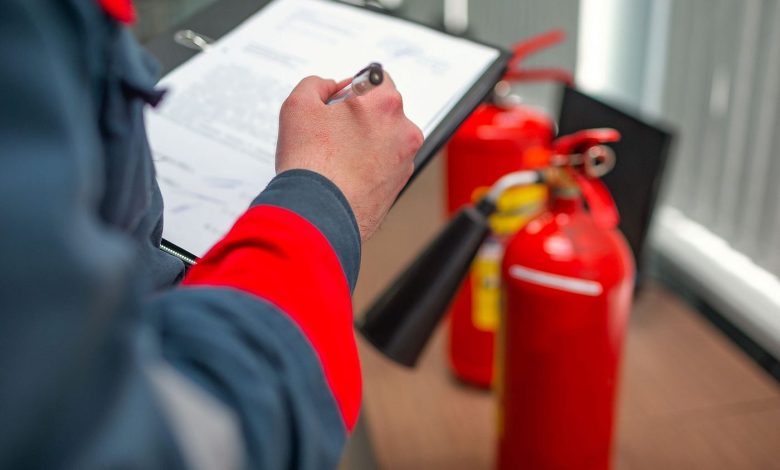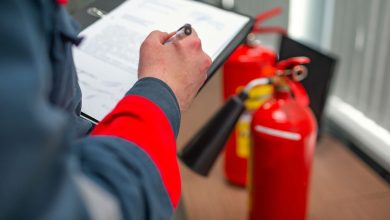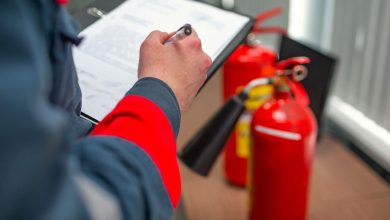Fire Extinguisher Training: Common Mistakes and How to Avoid Them
Fire extinguisher training

Fire emergencies can strike at any time, and fire extinguisher training plays a crucial role in workplace safety. Without proper training, employees may make critical mistakes that can lead to uncontrolled fires, injuries, or even fatalities. At Sri Triveni Crafts, we emphasize the importance of comprehensive fire safety education to ensure businesses are well-prepared for any fire-related emergency.
This blog explores the most common mistakes made during fire extinguisher training and provides actionable tips on how to avoid them.
Why Fire Extinguisher Training is Important
A well-trained workforce can quickly and effectively respond to fire hazards, reducing risks to lives and property. However, improper fire safety training can lead to panic, incorrect extinguisher use, and unsafe actions. Avoiding these mistakes ensures:
-
A quick and safe response to fires.
-
Reduced risk of fire-related injuries and property damage.
-
Compliance with fire safety regulations.
-
Increased confidence among employees in handling fire emergencies.
Common Mistakes in Fire Extinguisher Training and How to Avoid Them
Mistake #1: Not Knowing the Different Types of Fire Extinguishers
Using the wrong fire extinguisher can make a fire worse. Employees must understand the different extinguisher types and their appropriate uses:
-
Class A: For ordinary combustibles like paper, wood, and cloth.
-
Class B: For flammable liquids such as gasoline and oil.
-
Class C: For electrical fires.
-
Class D: For combustible metals.
-
Class K: For kitchen fires involving grease or oil.
How to Avoid This Mistake:
During fire and safety training, ensure employees learn about extinguisher classifications and when to use each one. Hands-on demonstrations help reinforce this knowledge.
Mistake #2: Incorrect Use of the Fire Extinguisher
Many employees panic when using a fire extinguisher for the first time. Common errors include:
-
Holding the extinguisher too far from the fire.
-
Aiming at the flames instead of the fire’s base.
-
Not sweeping the nozzle side to side.
How to Avoid This Mistake:
Use the PASS technique during fire training:
-
Pull the pin to unlock the extinguisher.
-
Aim at the base of the fire.
-
Squeeze the handle to release the extinguishing agent.
-
Sweep the nozzle from side to side until the fire is out.
Regular practice in fire drill training helps employees build confidence in extinguisher use.
Mistake #3: Not Checking Fire Extinguishers Regularly
Fire extinguishers can expire or malfunction if not properly maintained. Some common issues include:
-
Low pressure, making the extinguisher ineffective.
-
Blocked nozzles that prevent proper discharge.
-
Damaged or missing safety pins.
How to Avoid This Mistake:
Incorporate regular extinguisher inspections into your workplace’s fire safety training. Employees should check for:
-
A visible and intact safety pin.
-
A readable pressure gauge in the correct range.
-
No signs of damage or leaks.
Mistake #4: Ignoring Fire Drill Training
Many businesses conduct fire drill training only once and assume employees will remember what to do in an emergency. Without regular drills, employees may:
-
Forget evacuation routes.
-
Fail to recognize alarm sounds.
-
Panic instead of responding effectively.
How to Avoid This Mistake:
Schedule regular fire drill training sessions at least twice a year. Drills should include:
-
Alarm activation and evacuation practice.
-
Hands-on fire extinguisher use.
-
Evaluating response times and identifying areas for improvement.
Mistake #5: Attempting to Fight a Fire That is Too Large
One of the biggest dangers is trying to extinguish a fire that is already out of control. Employees should understand when to evacuate rather than fight the fire.
How to Avoid This Mistake:
Teach employees the fire size rule:
-
If a fire is larger than a wastebasket, do not attempt to extinguish it.
-
If the flames are spreading rapidly, evacuate immediately.
-
If smoke is making it difficult to breathe, leave the area and call emergency services.
A well-structured fire safety training program emphasizes the importance of quick decision-making in emergencies.
Conclusion
Avoiding common mistakes during fire extinguisher training can make the difference between a contained fire and a devastating disaster. By educating employees on fire extinguisher types, proper usage, maintenance, and evacuation procedures, businesses can significantly improve workplace safety.
At Sri Triveni Crafts, we advocate for regular fire and safety training to ensure employees are prepared to act confidently in emergencies. Explore our fire safety services at Sri Triveni Crafts.
Frequently Asked Questions (FAQs)
1. How often should fire extinguisher training be conducted?
Fire extinguisher training should be conducted at least once a year, with additional refresher courses as needed.
2. What is the biggest mistake people make when using a fire extinguisher?
The most common mistake is aiming at the flames instead of the fire’s base, which prevents effective extinguishing.
3. Why is fire drill training important?
Fire drill training ensures employees know evacuation routes, how to use fire extinguishers, and how to respond calmly in a fire emergency.
4. How do I maintain a fire extinguisher?
Fire extinguishers should be checked monthly for proper pressure levels, visible damage, and intact safety pins. A professional inspection should be done annually.
5. What should I do if a fire is spreading too quickly?
If a fire spreads rapidly or becomes uncontrollable, evacuate immediately and call emergency services rather than attempting to fight it.
By understanding and avoiding these common mistakes, businesses can enhance their fire safety training programs, ensuring a safer and more prepared workplace.

